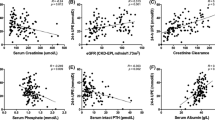Abstract
The aim of our study was to evaluate whether specifically designed urine collection pads give reliable results for routine and metabolic biochemistry tests in paediatric urine. Urine collected by bag or clean-catch from infants and children <2 yrs without metabolic disorders was divided into two aliquots, one of which was added to a collection pad, incubated for 15 min at 37°C (simulating in vivo collection conditions), then recovered by aspiration. Urine from adults with phaeochromocytoma and aqueous solutions of catecholamines were similarly treated. Routine, catecholamine, and metabolic analyses were performed on pad/non-pad aliquots. Selected metabolic analyses were also performed on pad/non-pad urine from patients with diagnosed inborn errors and urine containing added metabolites to simulate metabolic disorders. Routine tests (urea, electrolytes, creatinine, osmolality, calcium:creatinine, phosphate:creatinine, magnesium:creatinine, urate:creatinine [n = 32], oxalate:creatinine [n = 10]), and catecholamines (n = 12) showed good or acceptable concordance with no clinically significant pad/non-pad differences. Metabolic tests in infants and children without metabolic disorders all showed good pad/non-pad concordance for amino acids (n = 10), organic acids (n = 12), and glycosaminoglycans (n = 8). In patients with metabolic disorders (phenylketonuria [n = 1], homozygous/heterozygous cystinuria [n = 3], mucopolysaccharidoses II [n = 2] and III [n = 1], organic acid disorders [n = 6]) and urine containing added orotic acid to simulate urea cycle disorders, there was also good pad/non-pad concordance for diagnostic urinary metabolites. No extraneous organic acids were eluted from the pads. Sugar chromatography showed identical staining intensity in pad/non-pad samples. In conclusion, urine collection pads give reliable results for a wide range of routine and metabolic biochemistry tests in urine from paediatric patients.
Similar content being viewed by others
References
Bland JM, Altman DG (1986) Statistical methods for assessing agreements between two methods of clinical measurement. Lancet 1(8476):307–310
Davidson DF (2002) Phaeochromocytoma with normal urinary catecholamines: the potential value of urinary free metadrenalines. Ann Clin Biochem 39:557–566
de Jong JGN, Wevers RA, Liebrand-van Sambeek R (1992) Measuring urinary glycosaminoglycans in the presence of protein: an improved screening procedure for mucopolysaccharidoses based on dimethyldimethylene blue. Clin Chem 38:803–807
Macfarlane PI, Ellis R, Hughes C, Houghton C, Lord R (2005) Urine collection pads: are samples reliable for urine biochemistry and microscopy? Pediatr Nephrol 20:170–179
McConnell W, Vasikaran SD (2002) Spot urine analysis: acidification does not increase calcium recovery. Ann Clin Biochem 39:64–65
Menzies IS, Seakins JWT (1976) Sugars. In: Smith I, Seakins JWT (eds) Chromatographic and electrophoretic techniques, vol 1. Paper and thin layer chromatography, 4th edn. Heinemann Medical Books, pp 183–217
Passing H, Bablok W (1983) A new biometrical procedure for testing the equality of measurements from two different analytical methods. J Clin Chem Clin Biochem 21:709–720
Rao S, Bhatt J, Houghton C, Macfarlane P (2003) An improved urine collection pad method: a randomised clinical trial. Arch Dis Child 89:773–775
Wessler E (1968) Analytical and preparative separation of acidic glycosaminoglycans by electrophoresis in barium acetate. Analyt Biochem 26:439–444
Acknowledgements
We are very grateful to many colleagues in the Department of Paediatric Biochemistry, Royal Hospital for Sick Children, Edinburgh for the routine biochemistry assays and for their expertise in performing assays of aminoacids, organic acids, and mucopolysaccharides. We also thank Tamara Hanson in the Department of Clinical Biochemistry, Western General Hospital for the oxalate assays and Linda Griffiths in the Biochemistry Department, Crosshouse Hospital, Kilmarnock for the catecholamine assays.
Author information
Authors and Affiliations
Corresponding author
Rights and permissions
About this article
Cite this article
Crofton, P.M., Squires, N., Davidson, D.F. et al. Reliability of urine collection pads for routine and metabolic biochemistry in infants and young children. Eur J Pediatr 167, 1313–1319 (2008). https://doi.org/10.1007/s00431-008-0733-y
Received:
Accepted:
Published:
Issue Date:
DOI: https://doi.org/10.1007/s00431-008-0733-y




